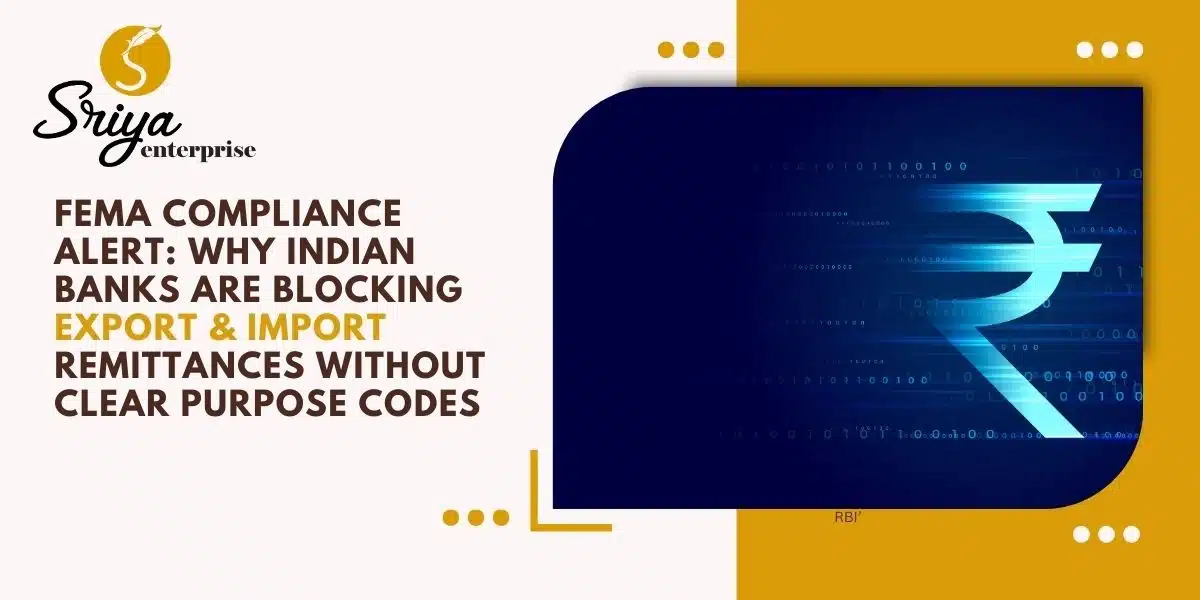Stablecoins and Cross-Border Transactions: Understanding FEMA Compliance Risks for Indian Businesses
At Sriya Enterprise, we aim to provide clear insights on emerging trends in trade finance,…

If you’ve recently tried to remit funds abroad, you may have noticed a new hurdle: Indian banks are now scrutinizing the purpose code you use for every overseas transaction. Gone are the days when “S1099 – Other Services Not Included Elsewhere” was a convenient catch-all code. Today, banks are routinely rejecting remittances labelled under this code, asking for specific transaction details, and sometimes blocking payments outright.
Following recent Reserve Bank of India (RBI) directives, banks have moved to restrict the use of general or miscellaneous purpose codes for outward remittances. The goal? To curb misuse, prevent money laundering, and ensure transparency about the true nature of outward fund flows from India.
Until now, many companies and individuals have used S1099 (“Other Services Not Included Elsewhere”) whenever their remittance didn’t clearly fit into RBI’s defined codes. This practice is now under intense scrutiny. Banks—whether public, private, or multinational—are refusing most S1099-coded remittances. Instead, they’re demanding a precise description of the underlying transaction and an accurate purpose code, as mandated in the A2 Form for non-import remittances.
At International Trade Decoded, we have been highlighting these practical challenges for Indian exporters and compliance professionals—on YouTube and through our advisory practice. As RBI and FEMA norms evolve, staying informed and prepared is critical for smooth cross-border operations.
Don’t let regulatory changes catch you off guard.
This is just one of many issues where regulatory nuance meets operational reality—exactly what we aim to decode for you, every week.
Don’t let your export or import payments get stuck due to FEMA compliance gaps!
Stay updated with real-world strategies for handling RBI purpose codes, cross-border remittances, and practical export/import operations.
Subscribe to International Trade Decoded (https://youtu.be/mam3VrlRNrI?si=kj-RghwseTSquDGs) for weekly guidance, or contact us for expert advisory and customized training on FEMA and international payments.